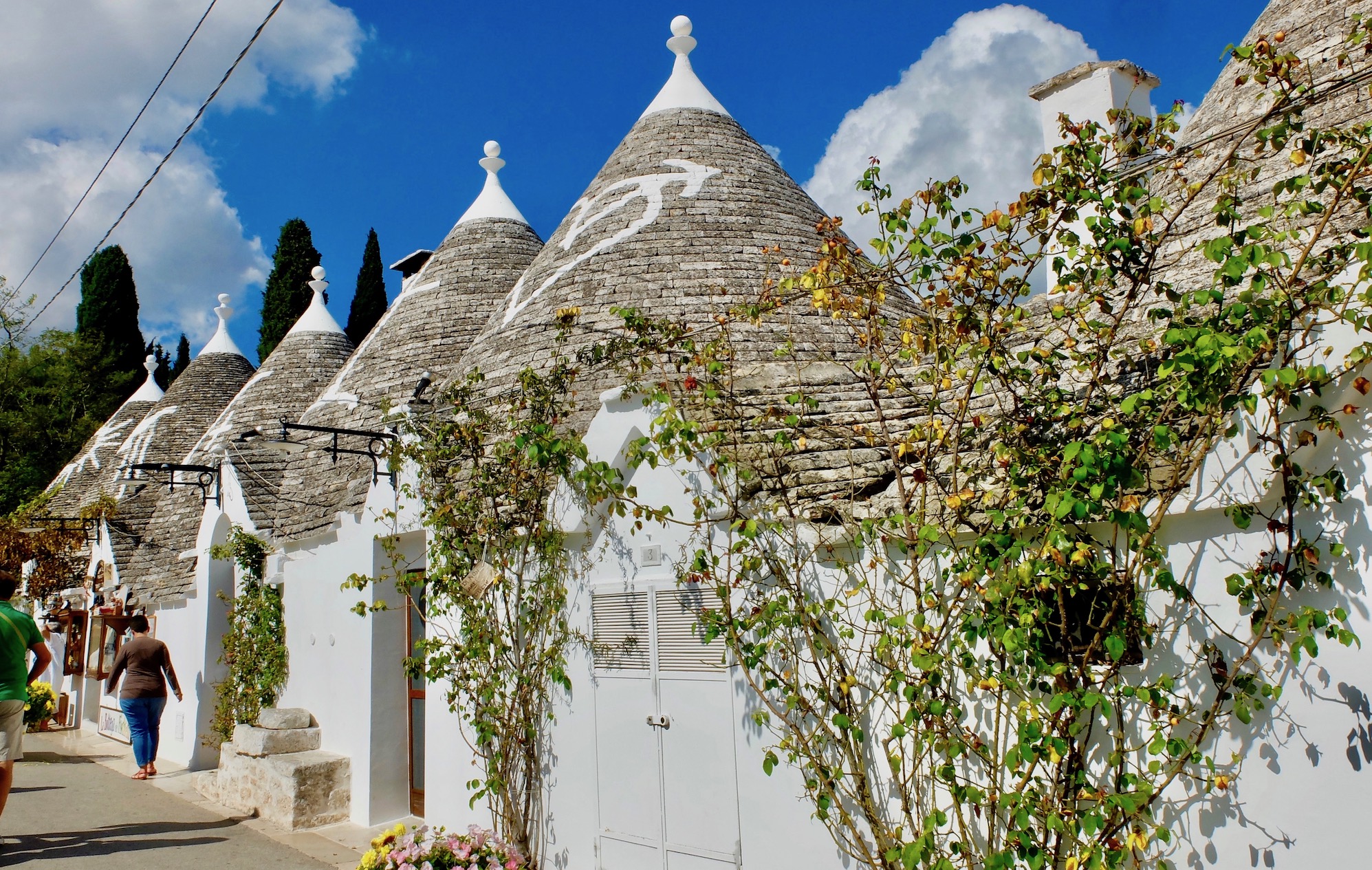
01 May AND WHAT DO TRULLI HAVE TO DO WITH TAXES?
When people think of Puglia, one of the first images that springs to mind is a vision of quaint whitewashed, dome-roofed, round houses called trulli.
While the trulli architectural style dates back to pre-history, many believe that the passion for more modern trulli construction developed as an early and sophisticated means of tax avoidance. During the middle ages, landlords instructed the farmers to build the dry stones roofs of the trulli with a removable keystone in the middle and the walls without mortar. When the tax inspectors appeared the farmers would pull the keystone out, collapsing the building – thus allowing the landowners to avoid paying any taxes in what some would describe as an enduring Italian tradition!
The largest concentration of these pretty buildings is in Alberobello, but they are also common across the whole of the Valle d’Itria area, a region of farming and agriculture. In their simplest form they are used as farming sheds and are dotted amongst the fields.
The town of Alberobello is undeniably a tourist magnet but with good reason and well worth a visit. The town is a UNESCO World Heritage Site and has hundreds of trulli, many of which are original.
Today the charming rounded shapes and conical stone roofs of the Pugliese trulli are so appealing that many of them are used as restaurants and visitor accommodation.
On our The Road Less Travelled tour of Puglia we not only visit Alberobello, but stay in a beautiful hotel in the Valle d’Itria, Masseria Fumarola, where some of our lucky guests get to sleep under these typical conical roofs!
We’re running our Puglia tour later this year in September and again in 2018:
- 14 – 28 September 2017
- 14 – 28 May 2018
